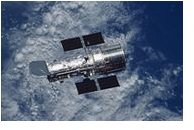History of Hubble Space Telescope: Learn All About the Powerful Hubble Space Telescope - Providing Us with Deep Space Pictures Since 1994
The Hubble Space Telescope
The Hubble Space Telescope has been providing scientists and enthusiasts with spectacular images of deep space since June of 1994, when NASA released the first Orion Nebula images confirming the birth of planets around newborn stars. It was evident then that the Hubble space telescope would be known as a versatile and vital research tool for astronomy. The history of the Hubble space telescope is as fascinating and interesting as the images provided by this large space observatory.
The History of Hubble Space Telescope: How it all Started
The idea of a space telescope was first proposed by Hermann Oberth, a German scientist in 1923. In 1946, just after the Second World War, Lyman Spitzer, professor and researcher at Yale University, seriously considered the need of a space-based optical observatory in his paper “Astronomical advantages of an Extraterrestrial Observatory." He set forth the advantages of an extraterrestrial observatory over ground-based observatories in his research paper and argued that advanced telescopes on the ground can only capture blurred images of lights coming from stars, due to the Earth’s atmosphere. A space telescope can escape this phenomenon and can accurately measure the emissions of X-rays from stars and other objects.
The Proposal
The need for building a space based observatory was gaining support from the astronomical field. The United States National Academy of Sciences proposed a development of an extraterrestrial space-observatory in their report in 1962. In 1965, Spitzer was asked to head a National Academy of Science and was assigned the task of performing comprehensive studies on the possible advantages and uses of a large space observatory. The committee published “Scientific Uses of the Large Space Telescope” in 1966. The paper stated the advantages of a space observatory in helping scientists to study stars and explore other galaxies.
Transforming Concepts and Ideas Into Reality
The two most important factors for building a space observatory were approval from a space agency and funding for the project. NASA was the only agency able to execute the recommendation of the National Academy, so a phased study was conducted by NASA and its contractors to evaluate and analyze the feasibility of a large space telescope.
The much-needed support from NASA gave a boost in transforming concepts into reality; however, the House Appropriations Sub-committee denied funding in 1975, as the total cost was roughly estimated to be a whopping $500 million! This resulted in large-scale lobbying efforts, and the European Space Agency (ESA) was invited to participate in the project. The ESA took part in observations and research and provided inexpensive solar panels. This team-effort also led to a reduction in cost and brought the project down to about $200 million. This proposal was accepted and funded in 1977 by the Congress. With the inception of the design of the space telescope, it was evident that a telescopic observatory would be launched to orbit in space in the near future.
Teething Problems
In 1985, the construction of the telescope was completed, and it was named “Hubble” after the American Astronomer, Edwin Hubble. It was due for release in 1986, but the disaster of Space Shuttle Challenger delayed its launch. The Hubble Space Telescope was finally launched aboard the space shuttle Discovery on April 24, 1990.
After a few weeks, Hubble began sending images, but they were blurred. This worried scientists, and an investigation was carried out revealing a spherical anomaly in one of the giant mirrors. In December 1993, engineers boarding the Space Shuttle Endeavor began their service mission to rectify the major flaw by replacing a number of Hubble parts. The Hubble Space Telescope began returning spectacular images after the crew returned to Earth.
The Hubble Space Telescope Servicing Missions
The second servicing mission was carried out in February of 1997, when astronauts added new blankets to keep the Hubble warm. They also replaced some of Hubble’s instruments. The Hubble space telescope was repaired once again in November of 1999, as its fourth gyroscope had failed to function.
The fifth servicing mission was canceled following the unfortunate disaster of the Columbia Space Shuttle. The final Hubble servicing mission is now planned for October 8, 2008.
The Hubble Space Telescope has provided outstanding images of distant galaxies and the solar system. The release of the Orion Nebula images and “deep field” images are some of the notable achievements of the Hubble Telescope.
(For the latest information about the final Hubble repair mission, read The Fifth and Final Hubble Repair Mission.)
References
https://history.nasa.gov/hubble/index.html
https://www.aerospaceguide.net/spacehistory/hubble-history.html
https://en.wikipedia.org/wiki/Hubble_Space_Telescope
